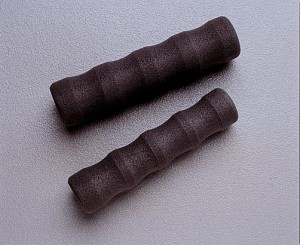Holy cow, it appears to be working! Constraint therapy actually appears to be working! Henry’s reaching with his affected arm, holding objects in his affected hand and actually POINTED his index finger upon request. HOLY COW. I don’t even know what to say I am so stunned. By my last post, you understand that I really wasn’t expecting this. Clearly our work has paid off for now.
What have we been doing? First, massive repeats with M&M’s as rewards. So, specifically, we have this train table where he plays with his Thomas the Train set. I sit at one end and my husband sits at the other with Henry in the middle. With his cast arm under the table and his affected arm on the table he has to hit a ball to either myself or Aaron, as directed (either fast or slow). He gets a point if he hits the ball as he’s been instructed and loses a point if he tries to hit it with his cast arm. After TWENTY points, he gets one M&M. We also held a ball above his head with the same goal. He hits the ball with his affected arm for a point, loses a point if he pulls out his cast. Twenty points gets an M&M. We went through three bags of M&M’s in four days. Special thanks to my friend Angie who supplied us with a pound of orange M&M’s (Henry’s favorite color) for added incentive. Clearly, repetition was the key here.
 We also purchased this little toy called a Hexbug. (Actually, I think we officially used the Hexbug “nano” it’s about an inch and a half long and looks like a centipede.) The entire thing vibrates, and it’s really lightweight. Henry can hold it in his affected hand and the vibrations stimulate his muscles so they respond without him concentrating as hard. It’s fantastic. The occupational therapists we were working with also put a vibrating toy on his bicep to “wake up” those muscles before we began any of his sessions. Now it’s the first thing we do, “wake up” his muscles before we start working.
We also purchased this little toy called a Hexbug. (Actually, I think we officially used the Hexbug “nano” it’s about an inch and a half long and looks like a centipede.) The entire thing vibrates, and it’s really lightweight. Henry can hold it in his affected hand and the vibrations stimulate his muscles so they respond without him concentrating as hard. It’s fantastic. The occupational therapists we were working with also put a vibrating toy on his bicep to “wake up” those muscles before we began any of his sessions. Now it’s the first thing we do, “wake up” his muscles before we start working.
We have a piece of foam tubing that covers the handle of his silverware. This helps him grip so he can feed himself. Independently feeding himself was a HUGE incentive.
Ultimately, after we got into the swing of things with the CIMT, it was officially tolerable. Sleeping is the hardest as he can’t roll over without waking himself up, and he’s not a really strong sleeper anyway (another blog for another day perhaps?) so further disrupting his sleep was a huge challenge for me. Also, the longer the cast is on his “good” arm, the more he understands how to manipulate his cast arm to get what he wants. Basically we’ve just evened out the ability of his two arms, but he’d still prefer to use his cast arm if it’s an option. But overall, at this point anyway, it is apparent that we’ve forged new neural-motor connections to his affected arm. His brain KNOWS he has a hand now, and that’s a huge step forward, regardless of how challenging that step has been.
This article is the third in a series of articles written by Beth about her experiences with Constraint Induced Movement Therapy. Read more articles from Beth.
Article written by Beth. Beth is a mom of two, Charlotte (7) and Henry (3) in a small town in rural America. Henry had a stroke in utero and as a result has Cerebral Palsy and Right sided hemiplegia. Beth still regularly Googles how to correctly spell Cerebral Palsy. She would describe her parenting style as somewhere in between desperately hopeful and cautiously optimistic, and is tremendously excited to blog about her parenting adventure on CHASA.



